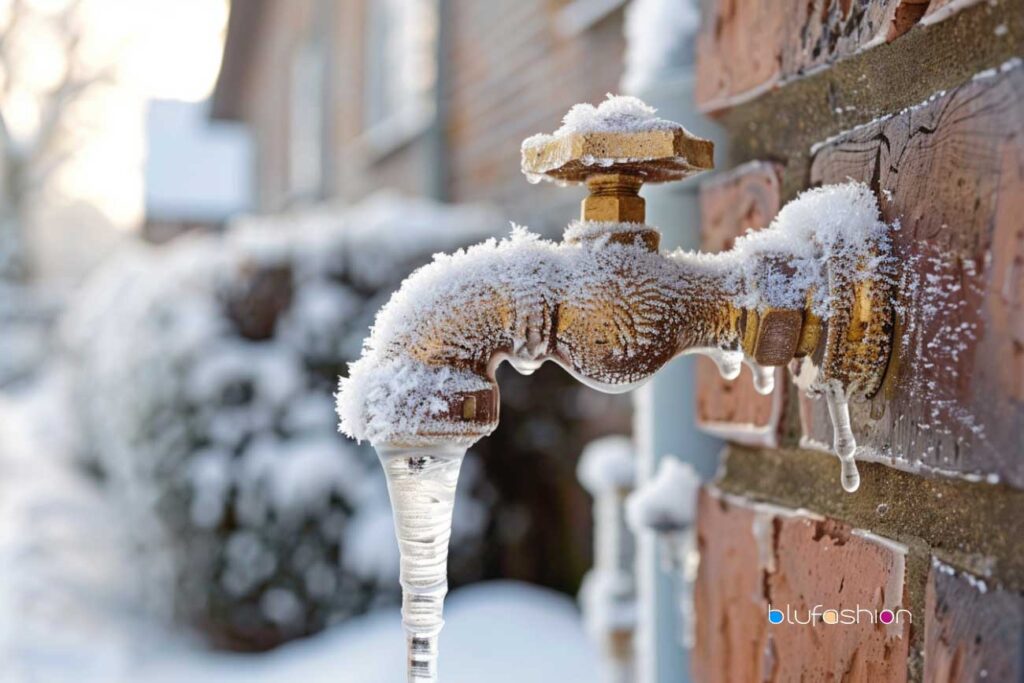Frozen water pipes are always a concern and a possibility during the cold winter months. Although there are various things you can do to prevent frozen pipes there is always a chance that pipes will freeze. If this happens, quick action to thaw frozen pipes can help minimize or avoid damage to pipes.
A faucet that produces no water or very little water is an indicator that you may have a frozen pipe. Trace the location of the freeze by following the water pipes from the faucet to the frozen area. A drop in water pressure can also signal a partial ice block. This happens before complete freezing. Catching it early allows quicker thawing. Pipes are more likely to freeze near exterior walls. These places have little insulation. Water comes into the house from outside. Exposed pipes are easier to thaw than pipes located behind walls.
The following steps can thaw frozen pipes and help prevent burst pipes.
How To Thaw Frozen Pipes?
- Before thawing, shut off the main water supply valve if you have access to it. This will minimize water damage from leaks as the pipes thaw.
- Start by checking all faucets in the home to find out how many areas of pipe are affected. Sometimes, a single faucet will be affected, but other times, multiple fixtures will freeze. Knowing the extent of the freeze will help you determine where to start to thaw frozen pipes.
- Turn the affected faucets on to allow water to drain as it thaws. The running water will also help to melt the frozen water in the pipe more rapidly. This is why a trickle of running water is a good way to prevent frozen pipes.
- Using heat gradually warm up the pipe to melt the ice. There are several safe heat sources that work well for this. An electric heating pad is a good option because it can be wrapped around the pipe to heat it evenly. A hair dryer or portable space heater is also a good heat source to use. Thaw frozen pipes gradually and evenly to prevent damage to the pipe.
- Note: Never use a blowtorch or open flame of any sort as your heat source. A torch or flame can present a fire hazard, and it can heat the water in the pipe too quickly, causing it to rupture.
- Continue to heat and closely monitor any frozen pipes until water is running through the faucet at regular pressure. Even a slight decrease in water pressure can mean that there is ice in the pipes.
- When the water is once again running well, consider what preventive measures you can take to avoid frozen pipes in the future.
- Cover exterior pipes with insulation sleeves or heat tape before winter. This can help prevent freezing.
Tips:
- Be prepared to shut off the water if the pipe begins to leak as it thaws. It is a good idea to have some containers near to catch water if needed.
- Never walk away while you are thawing a frozen pipe. The process should be closely monitored to avoid water damage in case of a leak.
- If you are not able to access the frozen pipe because it is in the wall, it may be possible to thaw it by turning up the heat in the house.
- If you are not able to trace the location of the frozen pipe, consider calling a professional plumber.
Quick action to thaw frozen pipes can save you the trouble and expense of repairing a burst pipe.
With some detective work and safe, gradual heating, you can send that ice packing and get your water back. My handy tips arm you to handle frozen pipes like a pro and avoid burst disasters. Just stay calm, act fast, and you’ve got this! Let me know if you need any clarification. Happy pipe thawing!
Recommended Reading:






